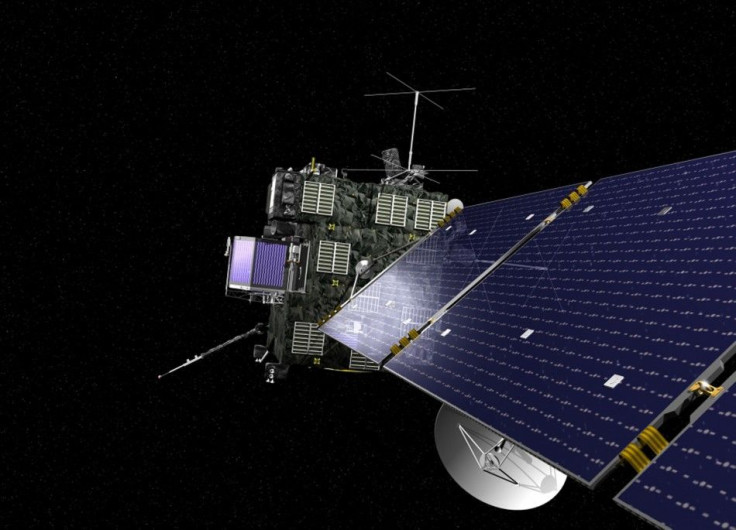The 12 Space Missions Revisited Before Christmas

Back in July 1965, the Mariner 4 was the first space probe to ever send back photos, which gave people a closer look of another world from space. Several years after, many innovation and technological advancement have been achieved for space exploration.
As the year ends, sparing a thought for the various space missions that explore the Solar system is worth the time. Here are the "12 Missions of Christmas" listed according to the length of time spent away from the planet.
Hayabusa 2
It has been three weeks since the Hayabusa 2 was launched and has recently left Earth's orbit. According to Space Flight Now, the Japanese H-2A launcher is expected to land on asteroid 1999 JU3 in 2018. Its launch was dubbed as the most ambitious mission to an asteroid ever attempted.
Gaia
It's already been a year and the spacecraft is now approximately 1.5 million kilometres (932,000 miles) away from Earth. Gaia is an ambitious mission by the European Space Agency (ESA) designed to produce a 3D map of the entire Milky Way. It is considered as the largest camera that went in space that can monitor the positions, movements and changes in brightness of every stars in the galaxy.
Maven
Maven (Mars Atmosphere and Volatile Evolution) studies the atmosphere of the second most studied planet in the Solar system. The Maven is approximately 225 million kilometres (139 million miles) away from home and has been away for 13 months after its launch.
Lunar Reconnaissance Orbiter (LRO)
LRO has been orbiting around the Moon since 2009 and has since mapped the lunar surface. After 5 years and six months, the orbiter is roughly 384,400 kilometres (238,606 miles) away from home.
New Horizons
It has already been 9 years and has travelled 4.7 billion kilometres (2.9 billion miles) since its launch in January 2006. This NASA project is set to investigate the wonders of planet Pluto (though its classification is still controversial). New Horizons is bound to make its nearest approach to the distant planet by July 14, 2015.
Venus Express
It is approximately 41.9 million kilometres (26 million miles) away and has been in orbit around Venus since 2006. It has been studying the planet's atmosphere and was able to catch occasional glimpses of the fiery surface below.
Messenger
The spacecraft has been orbiting the closest planet to the Sun since March 2011. The Messenger has been studying Mercury and has confirmed that there are substantial deposits of ice on the hot planet's surface. It is approximately 77 million kilometres (48 million miles) away from home.
Rosetta
The probe is around 510 million kilometres (317 million miles) away and has been gone for 10 years and nine months. The highlight of its mission is Philae's landing on comet 67P. Its research also suggested that Earth's water did not come from comets.
Opportunity Rover
The rover is now approximately 225 million kilometres (139 million miles) away from home and has landed on the Red Planet in 2004. The Opportunity Rover has shown an outstanding feat of endurance by driving more than 40 kilometres on Mars' surface.
Cassini Huygens
The European space probe has landed on the surface of Saturn's moon called Titan in January 2005. Before its batteries died, it has successfully sent back images of the moon's surface revealing a desolate hydrocarbon landscape under a petrochemical smoggy sky. The probe is approximately 1.2 billion kilometres (746 million miles) away from Earth.
Soho
Soho or Solar and Heliospheric Observatory has been studying the sun since 1995 and is roughly 1.5 million kilometres (932,000 miles) away from home. The satellite also serves as a daily basis to help predict space weather.
Voyager 1
It has been launched in 1977 together with its sister spacecraft Voyager 2, both powered by nuclear batteries. The Voyager 1 has travelled approximately 19.5 billion kilometres (12 billion miles) and counting. According to Daily Mail's latest update on the Voyager 1, the spacecraft is riding a massive "tsunami wave" that began last February. Apparently, it is the longest-lasting shock that researchers have witnessed in interstellar space.
Meanwhile, researchers that are affiliated with NASA used the Suomi NPP satellite to take a look at the holiday lighting in some key cities in the United States. The research saw that many areas are 20 to 50 percent brighter at night during the Christmas season with the lavish use of Christmas lights to liven up the holidays, Vox reports.





















